Part of my solution came in the form of acrylic-latex caulk (the type used around doors and windows). I use gray caulk full-strength to cement the track and roadbed in place. While the caulk is still wet, I apply the first layer of ballast. Once the caulk has set, I dress the ballast, apply water to wet it, and then bond it in place with clear acrylic-latex caulk, diluted 1:5 in water.
While using caulk as an adhesive greatly limited the transmission of sound, I’ve also started using a few other sound-dampening products for even better sound control. As shown in the illustration, my subroadbed layer starts with a strip of 15mm (roughly ½”) foam padding, the kind used for camping sleeping mats. I cement this to the plywood layout surface with the acrylic-latex caulk.
On top of the foam mat, I lay a 4mm-(5/32″) thick strip of automobile sound insulation. This is a dense asphalt-based product with a self-adhesive backing. I found it in an auto parts catalog, and it’s sold in sheets. I cut the material into strips to use on the layout, and it provides good support for the cork roadbed and track.
I’ve also managed to limit the amount of ballast I need (further cutting down sound transmission) by building up the right-of-way profile using half-strips of Woodland Scenics foam roadbed, as shown in the illustration. I cement it to the subroadbed with caulk.
Though the process may seem like a lot of work, it’s all worth it when I watch my trains glide along the main line with the only sounds coming from their on-board sound decoders.





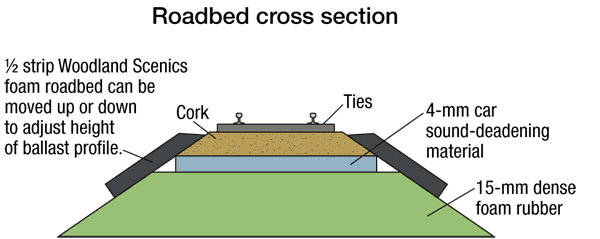
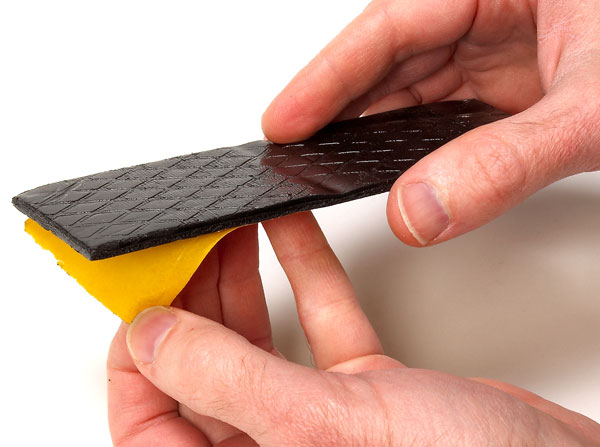

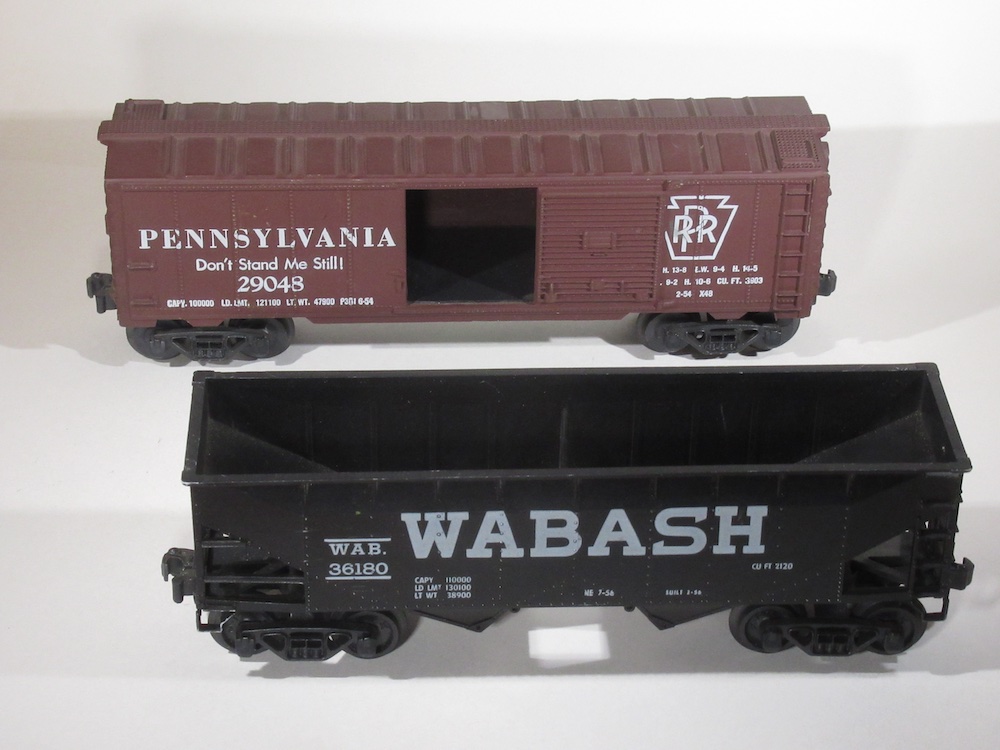
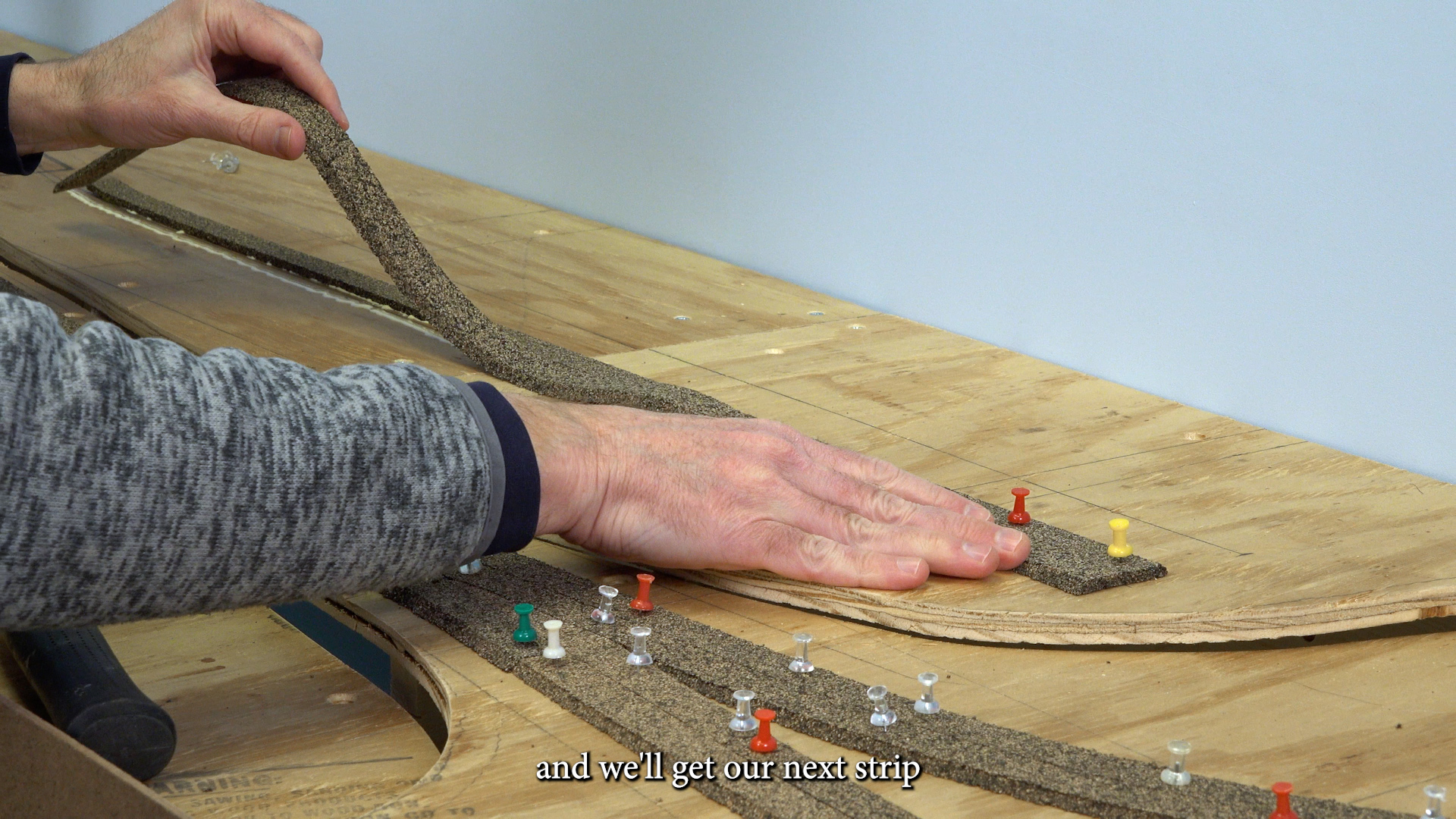
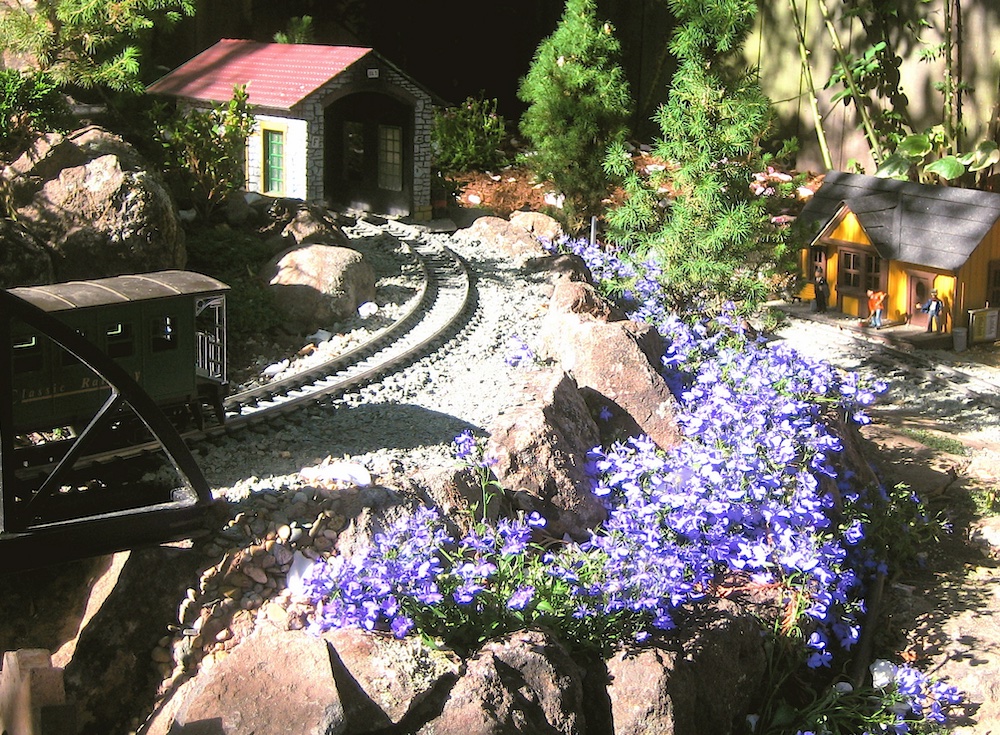
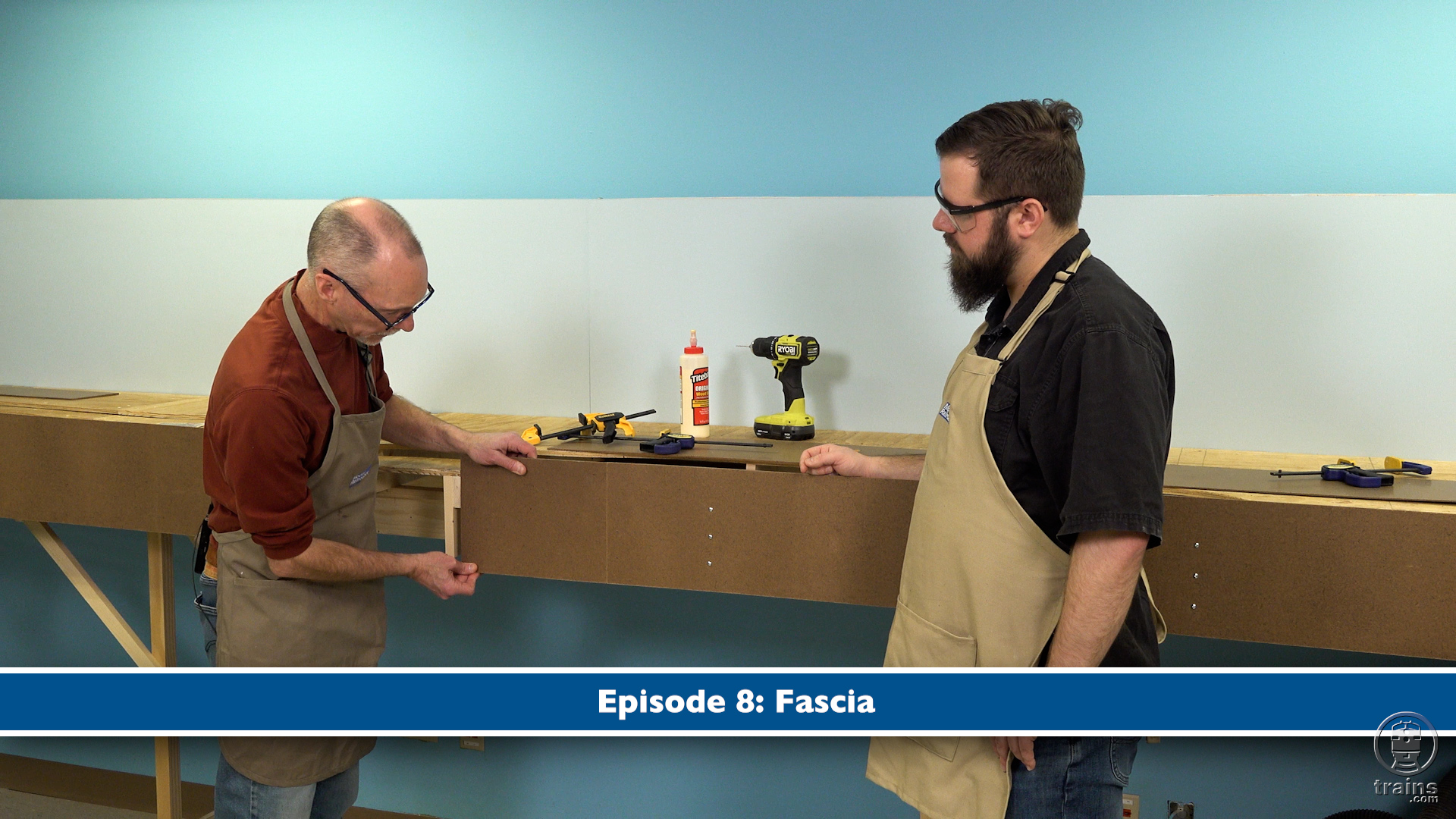




Our Charleston Area Model Railroad Club new sections of HO layout uses 5/8" or 1/2" plywood with 1/2" painted Homasote for sub-roadbed. Woodland Scenics Foam roadbed glued with tacky white glue. track nailed to Homasote, but not through to the plywood in most cases. Verrrrry quiet.
Found this article while looking for another one. I can see the positives of both sides of this story and for me the way to go is somewhere in between. In the article I was after, a test was done using many different techniques. One of them used "camper tape", the foam used to seal your camper or truck bed shell to the back of your pick-up.
I just use 1/8" cork strips, hand cut to 3/4" width, cut from a roll that is 2' x 4', the cork is then glued down with plain old contact cement, rolled smooth with a small roller (for sealing the edges of wallpaper) and then spike the track down, ballast it, let dry. Used this method for years and find that this has been the best way for me to go, hardly any noise. Tried other ways as an experiment, but always come back to my original way.
Our club learned the hard way that cork on 2" foam board can be incredibly noisy. In contrast, all of our spline roadbed sections are constructed with cork on top of many laminations of 1/8" masonite strips. It is as solid as a rock, firmly connected to the risers with no isolating layers, and very quiet. I'm thinking that spline roadbed throughout my entire home layout might be the way to go.
Whatever happened to good old sound board ? It was cheap & readily available @ lumber suppliers. It was plain or painted white on one side & made it easy to trace around the track before it was layed down permanently on the cork roadbed. Using 3/8" plywood for the baseboard made it sturdy enough to lean across to work on the details while under construction. Oh well, life used to be so uncomplicated.
I used this method on my current layout and found I need to lower the volume on my sound engines, being I have a walkin/duckunder style layout
I don't know where you were the last time a train went by, but they make a lot of noise. I consider this a part of railroading, not somthing to be eliminated.
Best of luck to you all……
The schematic shows how to do it but a picture of the finished prouct would be the deciding factor for me.
I have visited Flemming, and have seen his non-sound -roadbed in action, it's amazing, how this changes the appearance of the trains.
Peter
Sound equipped stock (including steer cars) are making this an important issue. I have areas which are hollow which act as sounding boards eg under raised embankments and a bridge abutment.
The answer was to fill with a builders expanding foam gun, also sold to fix doors and windows into walls, real ones that is.
Clever and worthwhile goals. Mention of the materials employed and where and how they might be obtained was very useful.
The modular group I belong to (S&SSof NC) uses luan plywood roadbed glued directly on the plywood module top. No cork or foam allowed. Noisy, no not really compared to the real thing. We happen to like hearing the sound of the train interacting with the surfaces below it.
This article came at just the right time. Because of the positive comments by others, I'll be using this on my new HO and N layouts. Noise has always been an issue on my cork and Homasote surface. The reduced noise will be worth the extra effort, plus the added elevation will allow more flexability in creating realistic right of way with rolling contryside, especially on two inches of foam.
Once ballasted, cork roadbed dries out and becomes hard and brittle. I think it is caused by the diluted glue used to hold the ballast. I have found that impregnating the cork with baby oil before ballasting has a positive effect on sound deadening. Also, baby oil applied after the fact decreases noise and it doesn't seem to loosen the ballast. Be careful as to how you apply the oil as to not get it on the track, etc.
Re: Soundboard: I found it at my local H… Depot.
Skip
Wow!! I'm just building my layout modules and this came at just the right time! I'm not really sure about the 15mm foam rubber, however, since I'm going to layer the layout including trackwork with 2 inches of foam anyway. The 4mm strip of sound insulation will be a great addition under the roadbed. Thanks!
Very Interesting; I have a doubt,
The woodland scenics foam balast is to replace the classic balast ?
Thanks
On my most recent layout, constructed over the last four years, I have used 6mm closed cell foam as raodbed, which has resulted in the most satisfactory layout I have had in fifty years of building layouts. The trains just whisper around the train room. Then I added Digitrax sound and it just could not be better!
Mike Richardson, President TUVA RR, Johannesburg, South Africa